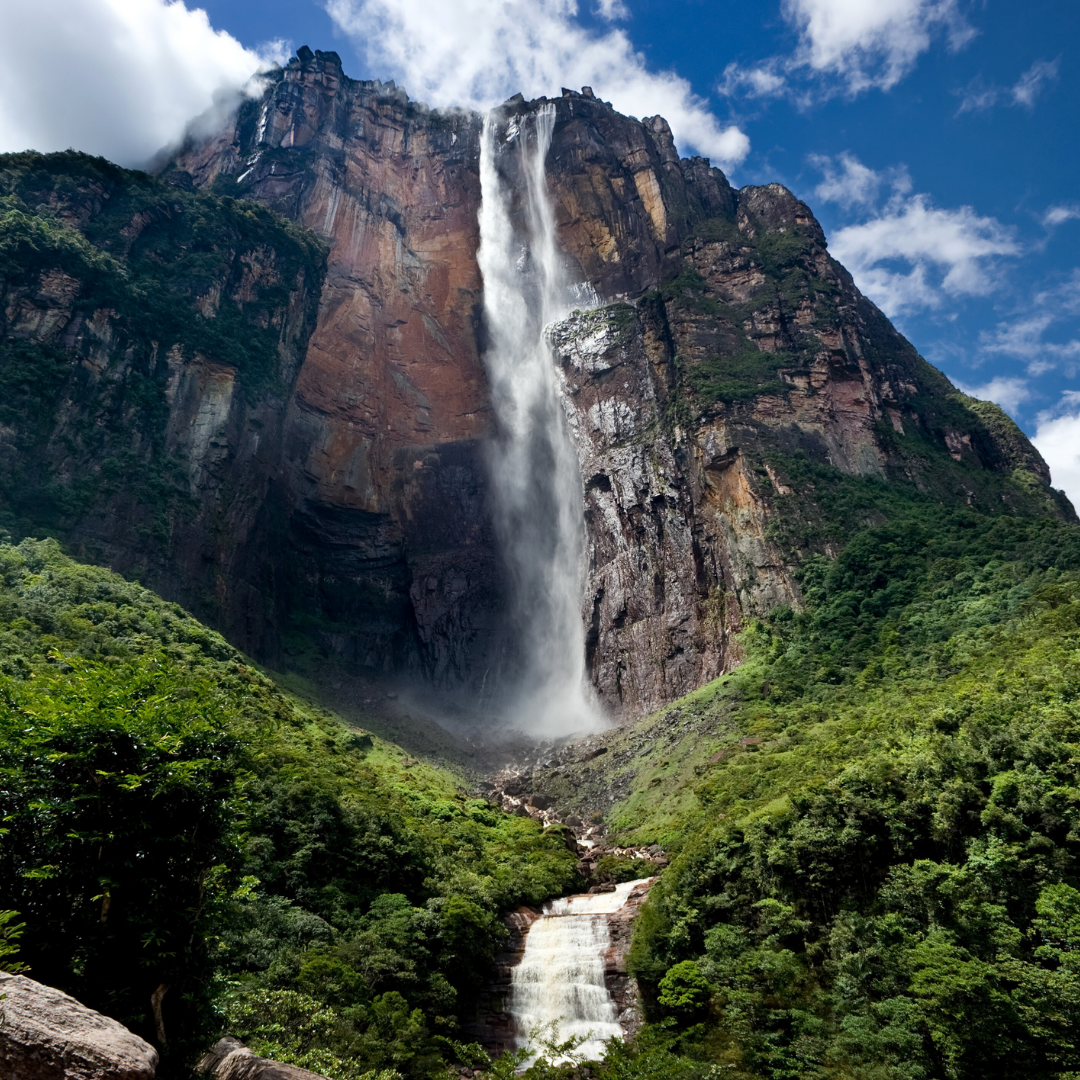Angel Falls Adventure: Sailing and Visiting the World’s Tallest Waterfall

In the heart of Venezuela’s Gran Sabana region, where ancient table mountains rise like behemoths from the earth, cascades a marvel of nature so magnificent, it seems as if the heavens themselves are pouring down to meet the world below. Angel Falls, the world’s tallest uninterrupted waterfall, stands as an awe-inspiring testament to the forces of nature. With water cascading from a height of 979 meters, the fall is not just a visual spectacle but also an adventurer’s dream. In this guide, embark on a journey of discovery as we sail, hike, and fly our way to this natural wonder, immersing ourselves in the beauty, culture, and magic that is Angel Falls.
The Majesty of Angel Falls: A Natural World Wonder
Discovered by aviator Jimmy Angel in 1933 (from whom it derives its name), Angel Falls plunges from the Auyán-tepui mountain in Venezuela. Its sheer height makes it 19 times taller than Niagara Falls! The descent of the water from such a height is so long that, during the drier seasons, the water often evaporates into a mist before it even reaches the ground. Surrounding the falls are vast, dense jungles and mesas, making the site look straight out of a prehistoric world. The ethereal beauty, combined with its remote location, lends Angel Falls an almost mythical aura, making it a bucket-list destination for travelers worldwide.
Sailing to Canaima: The Gateway to Angel Falls
The journey to Angel Falls often begins with a sail to Canaima, a lagoon-side village that serves as the primary launching point for excursions to the waterfall. The sail is an adventure in itself, with boats navigating the Carrao River’s winding path, cutting through dense rainforests and skirting along stunning tepuis (tabletop mountains). As the boat meanders through the water, one can often catch glimpses of local wildlife, cascading smaller waterfalls, and unique rock formations. Upon reaching Canaima, the lagoon greets visitors with waters tinted red from the minerals of the sand and a breathtaking view of several waterfalls, setting the stage for the grandeur of Angel Falls.
The Indigenous Pemon Community: Gatekeepers of the Falls
The Pemon, an indigenous community residing in the Gran Sabana region, have been the stewards of the land for generations. They regard the tepuis and the surrounding land as sacred, with deep-rooted beliefs and legends intertwined with the very fabric of the landscape. For travelers, the Pemon not only act as guides, providing invaluable knowledge about the region, but also offer insights into their rich cultural heritage, traditions, and folklore. Engaging with the Pemon community adds depth to the Angel Falls experience, transforming it from a mere visual spectacle to a profound cultural immersion.
Hiking and Flying: Different Ways to Experience Angel Falls
The trek to the base of Angel Falls, often guided by Pemon locals, is a thrilling adventure. The path cuts through dense jungles, with the sound of the roaring cascade guiding the way. Every step offers glimpses of the unique biodiversity of the region. For those less inclined to hike, a flyover offers an aerial view of the falls and the surrounding tepuis. The bird’s-eye perspective, especially during sunrise or sunset, is nothing short of magical, with the play of light on the cascading waters painting a picture of unparalleled beauty.
Flora and Fauna Surrounding the Waterfall
The ecosystem around Angel Falls is as fascinating as the waterfall itself. The dense rainforests house species such as jaguars, tapirs, and capuchin monkeys. The region’s avian life is particularly rich, with colorful parrots, kingfishers, and the rare harpy eagle calling it home. The flora is equally captivating, with orchids, bromeliads, and carnivorous plants thriving in the nutrient-rich environment. These forests, with their intricate food webs and symbiotic relationships, showcase nature’s marvels beyond the waterfall.
Best Times and Ways to Experience Angel Falls
While Angel Falls is a year-round destination, the best time to visit is during the rainy season (June to December), when the cascade is at its most voluminous. The sheer force of the water during these months is a sight to behold. Whether by hike or flyover, morning and late afternoon offer the best lighting conditions for photography. For a serene experience, consider visiting during off-peak months, when the site sees fewer tourists.
Preparing for the Adventure: What to Pack and Know
Venturing to Angel Falls requires preparation. Lightweight, moisture-wicking clothing, sturdy hiking shoes, insect repellent, and a waterproof bag are essentials. Given the remote location, it’s also advisable to carry a basic first-aid kit. Ensure you respect local customs, especially when interacting with the Pemon community. Finally, always adhere to leave-no-trace principles, ensuring the preservation of this natural wonder for future generations.
Angel Falls, in its majestic splendor, serves as a poignant reminder of the wonders nature holds. A journey to this cascade is not just about witnessing a natural phenomenon but about immersing oneself in a world where nature, culture, and history converge in a harmonious dance. As the mists of Angel Falls envelop you, there’s a profound realization of the beauty, fragility, and resilience of our world. A trip here is not merely an adventure; it’s a testament to the eternal love affair between the earth and its inhabitants.


